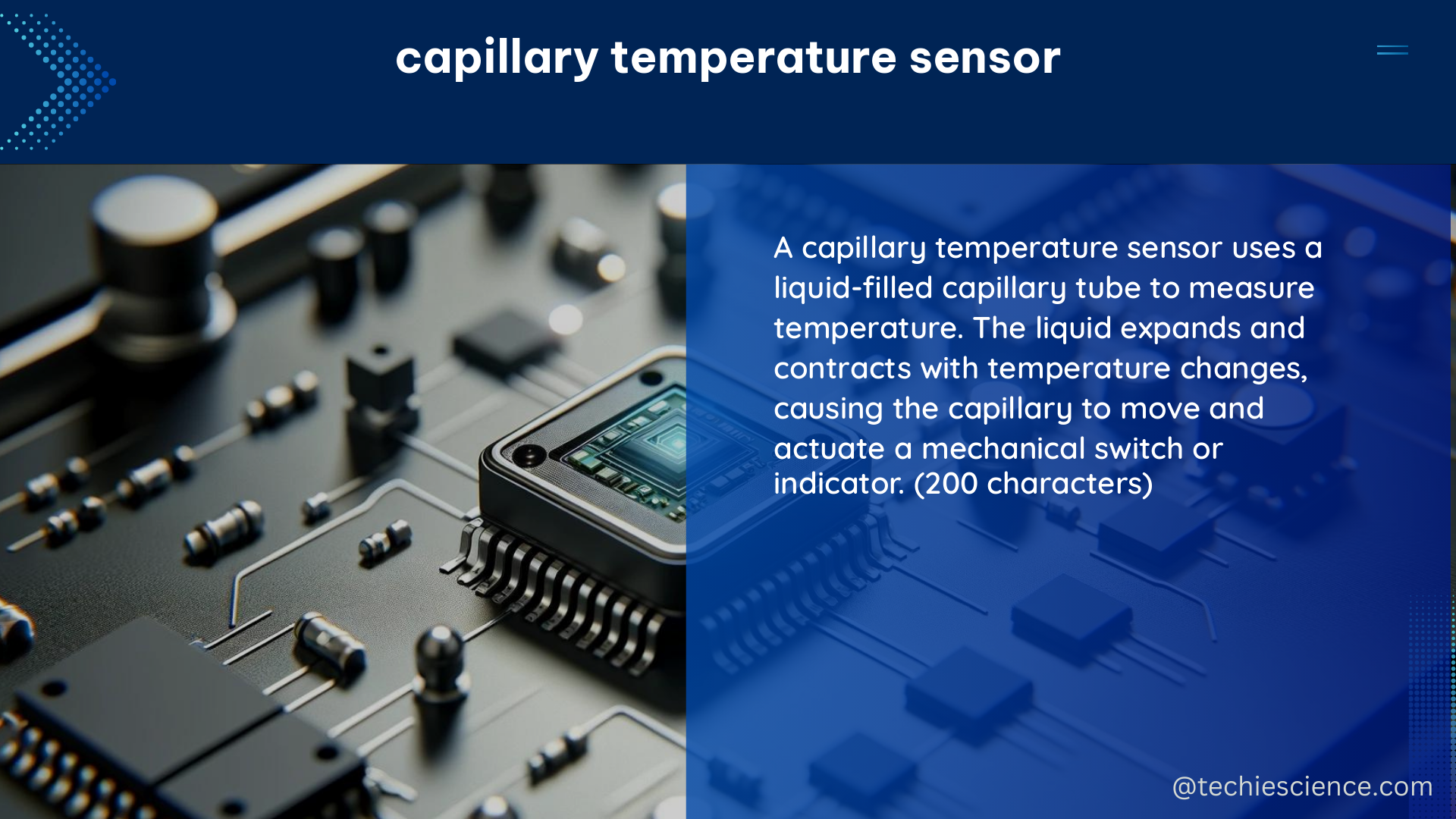Capillary temperature sensors are versatile devices that utilize the principle of capillary action to measure temperature accurately across a wide range of applications, from medical to industrial and scientific research. This comprehensive guide delves into the technical specifications, construction, and DIY approach to building your own capillary temperature sensor, providing a wealth of information for both novice and experienced users.
Technical Specifications of Capillary Temperature Sensors
Temperature Range
Capillary temperature sensors are designed to operate within a broad temperature range, typically from -40°C to 300°C or even higher, depending on the specific model and application. This wide temperature span makes them suitable for a diverse array of environments and processes, from cryogenic applications to high-temperature industrial settings.
Accuracy
The accuracy of capillary temperature sensors is a crucial factor, and most high-quality models boast an impressive accuracy of ±0.1°C to ±0.5°C. This level of precision ensures reliable and consistent temperature measurements, essential for critical applications where even minor deviations can have significant consequences.
Response Time
One of the key advantages of capillary temperature sensors is their rapid response time, typically ranging from 0.1 to 1 second. This fast response allows for real-time temperature monitoring, enabling quick detection and response to changes in the measured environment.
Stability
Capillary temperature sensors are renowned for their exceptional long-term stability, with a drift of less than ±0.1°C per year. This stability ensures consistent and reliable temperature readings over extended periods, making them ideal for applications that require continuous monitoring and data logging.
Sensitivity
These sensors exhibit high sensitivity, with a range of 0.1 mV/°C to 1 mV/°C. This sensitivity translates to precise temperature measurements, allowing for the detection of even the smallest temperature variations.
Electrical Resistance
The electrical resistance of capillary temperature sensors can vary, but most models have a resistance in the range of 100 Ω to 1 kΩ. This resistance range is compatible with a wide variety of data acquisition systems and electronic circuits, facilitating easy integration and implementation.
Power Consumption
Capillary temperature sensors are known for their low power consumption, typically ranging from 10 to 100 mW. This energy-efficient design makes them suitable for battery-powered or portable applications, where power conservation is a critical consideration.
DIY Approach to Building Capillary Temperature Sensors

For those interested in constructing their own capillary temperature sensor, the following step-by-step guide provides a detailed overview of the process:
Materials
To build a capillary temperature sensor, you will need the following materials:
– Thermistor: A temperature-sensitive resistor that serves as the core of the sensor.
– Capillary tubing: A small-diameter tube, typically made of glass or metal, that houses the thermistor.
– Insulation material: Used to seal the ends of the capillary tubing and prevent heat loss.
– Wiring: Necessary for connecting the thermistor to a data acquisition system or microcontroller.
Assembly
- Insert the thermistor into the capillary tubing, ensuring a snug fit.
- Seal the ends of the capillary tubing with the insulation material to prevent heat loss and maintain the sensor’s accuracy.
Wiring
- Connect the thermistor to a data acquisition system or microcontroller using the wiring.
- Ensure proper electrical connections to enable temperature measurement and data analysis.
Calibration
- Immerse the assembled capillary temperature sensor in a temperature-controlled water bath.
- Record the temperature and the corresponding thermistor resistance to establish a calibration curve.
- Use this calibration data to convert the thermistor resistance to accurate temperature readings.
Testing
- Test the capillary temperature sensor in the desired application to verify its performance and accuracy.
- Validate the sensor’s ability to provide reliable and consistent temperature measurements.
By following this DIY approach, you can create a customized capillary temperature sensor tailored to your specific needs and applications, leveraging the advantages of this versatile technology.
References
- Acquire capillary thermometer measurement – Arduino Forum, 2017-02-28, https://forum.arduino.cc/t/acquire-capillary-thermometer-measurement/441207
- Ultrathin conformal devices for precise and continuous thermal… – National Center for Biotechnology Information, 2013-09-15, https://www.ncbi.nlm.nih.gov/pmc/articles/PMC3825211/
- LiG Metrology, Correlated Error, and the Integrity of the Global… – National Institute of Standards and Technology, 1994, https://www.ncbi.nlm.nih.gov/pmc/articles/PMC7180865/

The lambdageeks.com Core SME Team is a group of experienced subject matter experts from diverse scientific and technical fields including Physics, Chemistry, Technology,Electronics & Electrical Engineering, Automotive, Mechanical Engineering. Our team collaborates to create high-quality, well-researched articles on a wide range of science and technology topics for the lambdageeks.com website.
All Our Senior SME are having more than 7 Years of experience in the respective fields . They are either Working Industry Professionals or assocaited With different Universities. Refer Our Authors Page to get to know About our Core SMEs.